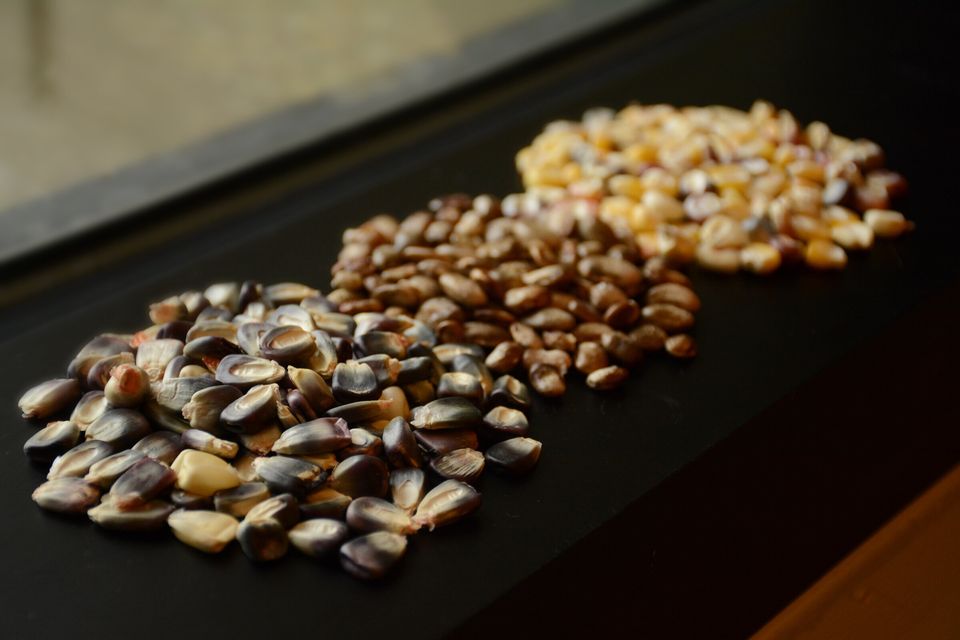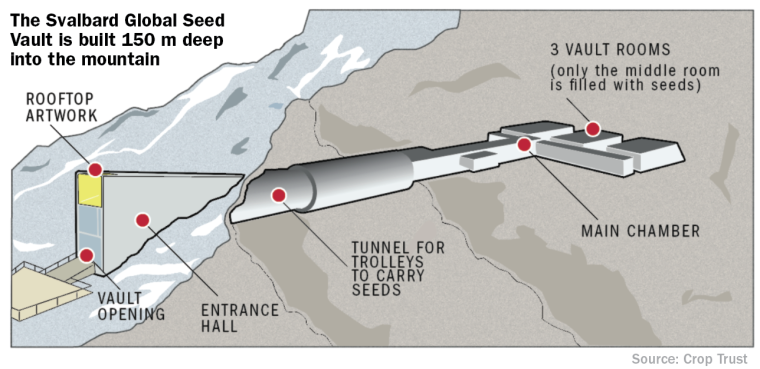Preserving Heirlooms
"The seed vault is the backup in the global system of conservation to secure food security on Earth.""We need to preserve this biodiversity, this crop diversity, to provide healthy diets and nutritious foods, and for providing farmers, especially smallholders, with sustainable livelihoods so that they can adapt to new conditions."Stefan Schmitz, executive director, Crop Trust, Bonn
 |
 |
| Cherokee Nation |
"It was the recognition of the vulnerability of the world’s gene banks that sparked the idea of establishing a global seed vault to serve as a backup storage facility. The purpose of the Vault is to store duplicates [backups] of seed samples from the world’s crop collections."
"Permafrost and thick rock ensure that the seed samples will remain frozen even without power. The Vault is the ultimate insurance policy for the world’s food supply, offering options for future generations to overcome the challenges of climate change and population growth. It will secure, for centuries, millions of seeds representing every important crop variety available in the world today. It is the final back up."
Crop Trust
There are a good many well organized, dedicated seed banks around the world, where heritage seeds are banked and maintained, and for many the purpose is to supply small-hold farmers and people living in poverty around the world with seeds to grow their own crops. Located in areas around the world from North America, Asia, sub-Saharan Africa, Central America, India and Oceania, among others, research and collection and distribution helps to ensure that seeds to produce grains and vegetables to feed the world will never be lost.
 |
| An employee of the Potato International Centre (CIP) in Lima, handles seeds of potatoes and sweet potatoes being cultivated at the Centre. January 25th, 2008. Seeds of these tubercules were sent to the Svalbard Global Seed Vault (SISV) in Norway. |
One of many interesting seed banks is maintained in a special vault in the Arctic meant to preserve seeds for rice, wheat and assorted food staples, where a million varieties are preserved. This place is the Svalbard Global Seed Vault, built into a mountainside and designed as a storage facility, with its goal to protect the integrity of vital crop seeds should cataclysms of nuclear war or plant pathogens strike the world order when it becomes imperative to safeguard global food supplies.
 |
It is also called the "doomsday vault", and was built in 2008 by the government of Norway on the island of Spitsbergen in the Svalbard archipelago located between Norway and the North Pole under the auspices of the global Food Trust. This week, the vault was opened to receive seeds from 30 gene banks including seeds from India, Mali and Peru, alongside Britain's Royal Botanical Gardens' banked seeds from Highgrove, Prince Charles' private estate.
At one time, an estimated 7,000 different plants were cultivated around the world. However, according to agricultural experts, at the present time about 60 percent of food comes from three main crops; maize, wheat and rice, a focus lacking in diversity to the extent that should each of those crops -- which use a diminishing number of seed types, lacking diversity -- fall victim to an overwhelming challenge due to climate change, vulnerable mono-seed harvests may fail.

Statistics warn that one in nine people around the globe -- according to the United Nations' World Food Programme -- go to bed hungry. According to scientists, erratic weather patterns could threaten both the quality and quantity of food available on a broad scale. Norway recently completed an $11 million upgrade to the building which had been constructed as a safe food vault at Svalbard in reflection of the preservation qualities of the Arctic cold.
And then it was discovered during a period of inclement weather in the form of an unexpected thaw of permafrost, that the doomsday vault had been compromised by meltwater entering the tunnel vestibule. The good news part in the alarming bad news story is that none of the seeds received water damage.
 | ||||
| This photo March 1, 2016 shows a man carrying one of the newly arrived boxes containing seeds from Japan and USA into the international gene bank Svalbard Global Seed Vault (SGSV), outside Longyearbyen on Spitsbergen, Norway. |
Labels: Arctic, Global Agriculture, Heritage Seeds, Norway, Preservation, Storage

0 Comments:
Post a Comment
<< Home